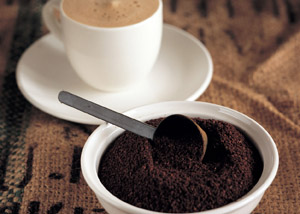Hawaiian Kona Coffee introduces boutique coffee beans in the Manoa Valley area of Oahu.
The climate is very suitable, the sun in the morning gently passes through the air full of water vapor, in the afternoon, the mountains will become more humid and foggy, and the white clouds surging in the air are natural umbrellas for coffee trees, and the evening will become sunny and cool. Because of the suitable natural conditions, the average yield of Kona coffee is very high, reaching 2240 kg per hectare, while the yield of coffee in Latin America is only 600 kg to 900 kg per hectare.
Kona coffee is grown without shelter, and Hawaii has an island climate, often with a dark cloud, resulting in a shading effect. Coffee farmers in Hawaii usually keep their farms quite clean, and the fertile land, coupled with the fine management of farmers, is suitable for the climate in which coffee grows. Kona Coffee has become a boutique coffee on the market. [1]
Cover factor editing
Environmental requirements
Kona coffee
Kona Coffee (10)
Soil: fertile tropical Hawaiian volcanic soil that provides the dense nutrients of the Kona Coffee Tree.
Altitude: the appropriate altitude of 2100 to 3600 meters and the cool moonlight promote the fruit of Kona Coffee to ripen slowly and create an excellent taste with rich appearance and full moisture.
Rizhao: the warm tropical sun plays an important role in the reproduction of coffee trees. Hawaii provides the morning light that Kona Coffee needs.
Cloud cover: due to the rise of clouds at noon, the severe direct sunlight is ensured and stopped.
Rainfall: cloud cover brought enough Rain Water, so that after a morning sun coffee, eager to enjoy the afternoon Rain Water's moisturizing baptism.
Slope: a good slope makes Kona coffee absorb enough water in the soil without absorbing too much and affecting the flavor of the coffee.
Planting pattern
Kona coffee has always been grown at home. At first, only men were allowed to work in the coffee garden, and later women joined in. This kind of family production of Hawaiians preferred to rely on the efforts of their families rather than hiring workers to work, so it was normal for Hawaiians to have eight or nine children at that time.
Since then, new immigrants from the Philippines, the United States and Europe have come to Hawaii to engage in the coffee industry. Over time, Hawaii has formed a social atmosphere that centers on family culture and is easy to absorb foreign cultures. and make it a major feature of Hawaii.
The harvest season of Kona coffee is from late August to January of the following year, when farmers pick the ripe fruit in batches and get coffee beans after processing.
Manufacturing process
Kona coffee uses water washing and natural drying. Hawaii's clean and sweet mountain spring water provides the ideal conditions for washing, which creates the bright appearance and pure and fresh taste of Kona coffee beans. The washed coffee beans are placed on a huge plate and dried naturally by the sun.
Taste
Kona Coffee is fresh, crisp, medium-bodied, slightly sour and full-bodied, with a long finish. Most rarely, Kona coffee has a blend of wine, fruit and spice, as charming as the colorful colors of this volcanic archipelago.

Important Notice :
前街咖啡 FrontStreet Coffee has moved to new addredd:
FrontStreet Coffee Address: 315,Donghua East Road,GuangZhou
Tel:020 38364473
- Prev

Jamaica Blue Mountain Highland Coffee Blue Mountain Coffee introduces boutique coffee beans St. Thomas producing area
But in 1948, the quality of coffee had declined and Canadian buyers refused to renew their contracts, so the Jamaican government set up the Coffee Industry Committee to save the fate of top coffee. By 1969, the situation had improved because the use of Japanese loans improved the quality of production, thus ensuring the market
- Next

Introduction of Peruvian Organic Coffee introduction of characteristic organic coffee in northern Peru
Compared with high-quality organic Peruvian coffee, the difference between ordinary organic Peruvian coffee and high-quality organic Peruvian coffee is huge: relatively cheap beans are not only poor in quality, but often have obvious defects in the cup. Especially the grass flavor, overfermented flavor. It takes a lot of effort to find good Peruvian coffee beans that can be bought by a lot of middlemen or other ways.
Related
- Does Rose Summer choose Blue, Green or Red? Detailed explanation of Rose Summer Coffee plots and Classification in Panamanian Jade Manor
- What is the difference between the origin, producing area, processing plant, cooperative and manor of coffee beans?
- How fine does the espresso powder fit? how to grind the espresso?
- Sca coffee roasting degree color card coffee roasting degree 8 roasting color values what do you mean?
- The practice of lattes: how to make lattes at home
- Introduction to Indonesian Fine Coffee beans-- Java Coffee producing area of Indonesian Arabica Coffee
- How much will the flavor of light and medium roasted rose summer be expressed? What baking level is rose summer suitable for?
- Introduction to the characteristics of washing, sun-drying or wet-planing coffee commonly used in Mantenin, Indonesia
- Price characteristics of Arabica Coffee Bean Starbucks introduction to Manning Coffee Bean Taste producing area Variety Manor
- What is the authentic Yega flavor? What are the flavor characteristics of the really excellent Yejasuffi coffee beans?

